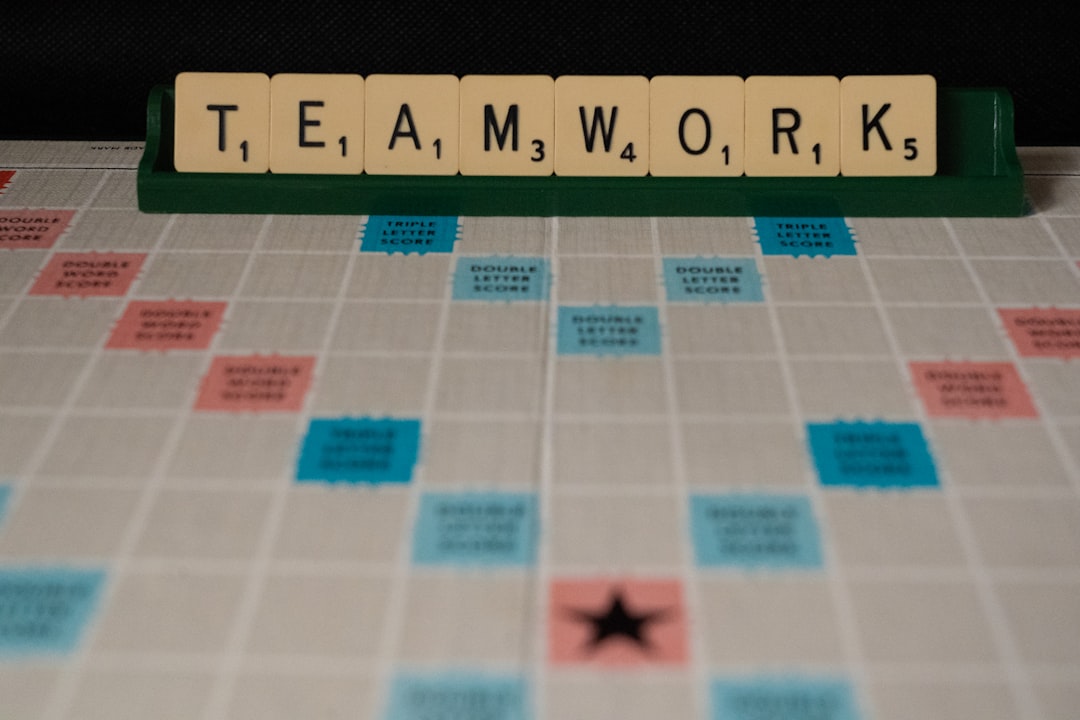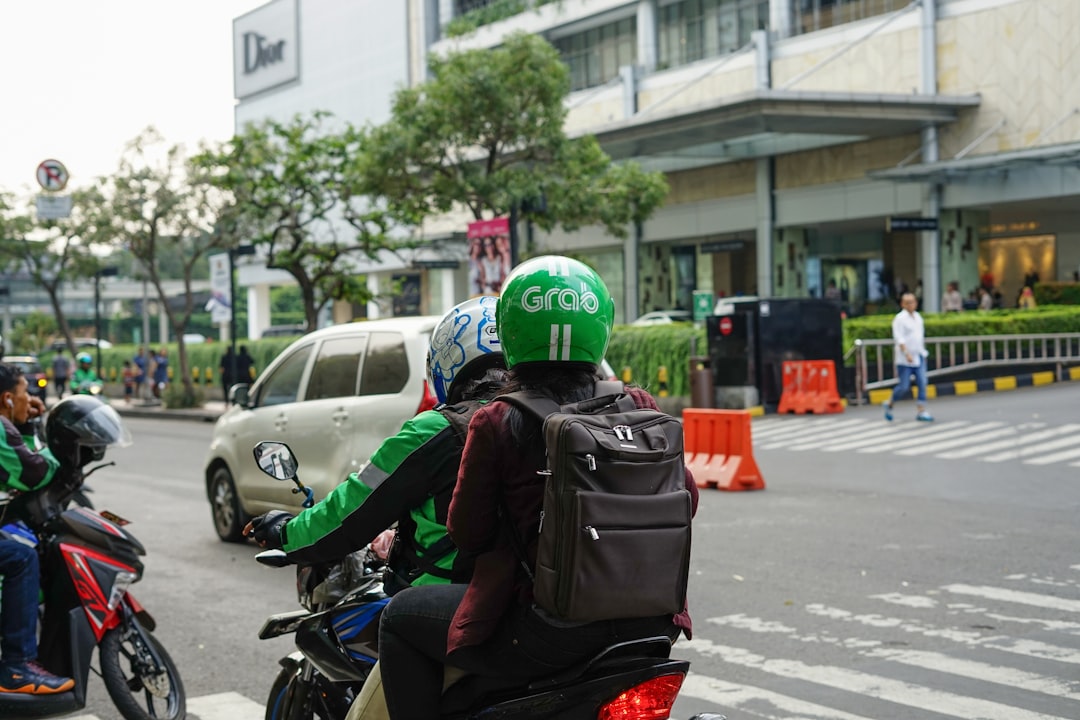Productivity Hacks for Entrepreneurs on the Move

Introduction
Entrepreneurs who travel constantly face a unique set of challenges. They must juggle client calls, project deadlines, marketing tasks, and personal wellbeing while moving between airports, co‑working spaces, cafés, and sometimes even beach huts. The freedom of a nomadic lifestyle is intoxicating, but without the right habits and tools it can quickly devolve into a chaotic scramble for time. This guide gathers proven productivity hacks that fit the mobile entrepreneur’s reality. Each technique is designed to be lightweight, adaptable, and easy to implement wherever you find yourself.
The Mindset of a Mobile Entrepreneur
Before diving into tools and tactics, it helps to understand the mental framework that underpins sustainable productivity on the road.
Embrace Structured Flexibility
The paradox of remote work is that the most effective schedules are both structured and flexible. Structure gives you a clear outline of what needs to happen each day. Flexibility allows you to shift that outline when a flight delay or a sudden networking opportunity arises. Treat your day as a series of “time blocks” rather than a rigid hour‑by‑hour plan. Within each block you know the type of work you will focus on, but you can move the block forward or backward as circumstances dictate.
Prioritise Impact Over Activity
When you are constantly on the move, the temptation is to fill every spare minute with low‑value tasks—checking social media, answering non‑essential emails, or reorganising a spreadsheet that could wait. Adopt the “impact first” rule: ask yourself whether a task directly moves a project forward, generates revenue, or strengthens a strategic relationship. If the answer is no, defer or delegate it.
Guard Your Energy
Physical and mental energy are finite resources, especially when you are coping with time‑zone changes, jet lag, and unfamiliar work environments. Recognise that productivity is not about squeezing more work into each hour, but about aligning your highest‑energy periods with your most important tasks. Schedule deep work for when you feel alert, and reserve lighter activities for the inevitable low‑energy windows.
Core Productivity Systems
A solid system provides the scaffolding for all the hacks that follow. Below are three complementary systems that work well together for entrepreneurs on the move.
Capture‑Clarify‑Organise Workflow
- Capture every idea, task, or commitment the moment it surfaces. Use a digital inbox that syncs across devices—such as a note‑taking app or a simple email to yourself.
- Clarify each captured item within 24 hours. Decide if it is actionable, reference material, or something to discard.
- Organise actionable items into categories: “Next Actions,” “Waiting For,” “Someday/Maybe,” and “Projects.” This mirrors the trusted Getting Things Done (GTD) methodology but stays lightweight enough for travel.
Time‑Blocking with a Mobile Calendar
Create blocks of time for deep work, meetings, admin, learning, and personal care. Use a calendar that you can access from any device—Google Calendar, Outlook, or any app that supports time‑zone auto‑adjustment. Colour‑code each block type for instant visual recognition. When you land in a new city, simply shift the entire schedule by the new time‑zone offset; the blocks remain intact.
Weekly Review Ritual
Set aside 30‑45 minutes at the end of each week—preferably on a Sunday evening or Monday morning—to:
- Review completed tasks and celebrate wins.
- Update project statuses.
- Re‑evaluate priorities for the upcoming week.
- Clean out the capture inbox and ensure no loose ends remain.
Doing this consistently prevents the “task pile‑up” that can happen when you’re constantly moving from place to place.
Tools That Travel Light
Choosing the right digital tools can make or break your productivity while traveling. Below is a curated list of apps and services that are low‑bandwidth, cross‑platform, and designed for nomadic use.
Note‑Taking and Capture
- Notion – All‑in‑one workspace for notes, databases, and task lists. Works offline and syncs when you reconnect.
- Evernote – Simple capture tool with powerful search and tagging. Its web‑clipper is handy for gathering research on the go.
- Apple Notes / Google Keep – Lightweight options that are pre‑installed on most devices, making them ideal for quick capture without installing extra software.
Task Management
- Todoist – Intuitive task manager with natural language input, labels, and filters. Its offline mode ensures you can still tick off tasks without internet.
- TickTick – Offers built-in Pomodoro timer, habit tracker, and calendar view. The habit feature helps maintain routines like exercise or reading.
- Microsoft To Do – Seamlessly integrates with Outlook and Teams, useful if you already rely on the Microsoft ecosystem.
Calendar and Scheduling
- Google Calendar – Automatic time‑zone adjustments, shared calendars, and easy integration with video‑call links.
- Calendly – Simplifies meeting scheduling by letting others pick slots from your availability. It eliminates endless email back‑and‑forth.
- World Time Buddy – Quick visual comparison of multiple time zones, perfect for arranging calls across continents.
Communication
- Slack – Central hub for team communication. Use the “Do Not Disturb” schedule to block notifications during deep‑work blocks.
- Zoom – Reliable video‑conference platform with mobile apps. Pair it with a good headset for crystal‑clear audio.
- Signal – Encrypted messaging for secure client conversations.
File Storage and Collaboration
- Google Drive – Cloud storage with real‑time document editing. Works well on low‑speed connections because it syncs only changed portions of files.
- Dropbox – Strong version control and selective sync options to conserve device storage.
- Notion – Also doubles as a repository for SOPs, templates, and reference material.
Focus and Time Tracking
- Forest – Gamified focus timer that encourages you to stay off your phone. Each session plants a virtual tree that grows as you work.
- RescueTime – Automatic tracking of app and website usage, giving you insight into where your time goes.
- Toggl Track – Simple one‑click timer that logs billable hours for client projects. It integrates with many project‑management tools.
Health and Wellbeing
- Headspace – Guided meditation sessions that can be done in 5‑minute increments, ideal for resetting after a long flight.
- MyFitnessPal – Tracks nutrition and exercise, helping you stay healthy despite irregular meal schedules.
- Sleep Cycle – Analyzes sleep patterns and wakes you during the lightest sleep phase, improving rest quality across time zones.
Day‑to‑Day Hacks for Maximum Efficiency
Having the right tools is only part of the equation. Below are practical, bite‑size habits that you can adopt immediately.
Morning Routine in a New City
- Hydrate and Move – Drink a glass of water and do a quick stretch or short walk. This combats the stiffness that comes from sleeping in unfamiliar beds.
- Review Calendar – Open your time‑blocked calendar and mentally rehearse the day’s priorities.
- Three‑Task Rule – Identify the three most important outcomes you need to achieve before lunch. Write them down in your task manager.
- Set a “No‑Screen” Window – For the first 30 minutes after waking, avoid emails and social media. Use this time for reflection, reading, or planning.
Managing Email on the Go
- Apply the Two‑Minute Rule – If an email can be responded to in two minutes or less, handle it immediately. Otherwise, flag it for later.
- Use Email Filters – Automatically route newsletters, promotions, and low‑priority updates to a separate folder. Check that folder only during designated admin blocks.
- Batch Process – Allocate a single 20‑minute slot each day for email. This prevents constant interruptions.
The Power of Micro‑Breaks
Research shows that short, frequent breaks boost focus. Adopt the “52‑17” pattern: work for 52 minutes, then take a 17‑minute break. During breaks, get up, stretch, look out a window, or do a quick breathing exercise. The key is to step away from the screen completely.
Leveraging Co‑Working Spaces
Co‑working spaces are more than just desks. They offer networking, structure, and a change of scenery that can reset mental fatigue.
- Reserve a Desk in Advance – Many platforms let you book a spot the night before, ensuring you have a reliable work environment.
- Set a “Desk‑Only” Rule – When you are at the co‑working space, limit personal browsing to designated break times. This mental cue separates work from leisure.
- Network Intentionally – Attend a weekly community event or coffee hour. Building relationships can lead to referrals and collaborations that save time in the long run.
Travel‑Smart Packing for Productivity
Your backpack is your mobile office. Keep it lean but comprehensive.
- Universal Power Adapter – Eliminates the need to hunt for compatible outlets.
- Portable Wi‑Fi Router – Provides a secure hotspot in hotels that have weak or unreliable internet.
- Noise‑Cancelling Headphones – Critical for focusing in noisy cafés or airport terminals.
- External SSD – Fast, reliable storage for large files when cloud access is limited.
Managing Time Zones Without Stress
- Set a “Home Base” Time Zone – Choose a primary time zone (often your client’s or your own) and schedule all meetings relative to it. Use the world‑clock feature on your phone to see the offset at a glance.
- Create “Overlap Hours” – Identify 2‑3 hours each day when most of your key stakeholders are available. Block these as meeting windows and keep the rest of the day reserved for deep work.
- Automate Time‑Zone Conversions – Use calendar shortcuts that automatically adjust when you travel. For example, when you create an event in Google Calendar, it will display the correct local time for each participant.
Maintaining a Healthy Lifestyle While Traveling
- Meal Prep Light – Carry protein bars, nuts, and dried fruit for quick nutrition. When possible, choose a local market and assemble a simple salad or wrap.
- Exercise in Small Bursts – Do a 10‑minute bodyweight routine in your hotel room, use the hotel gym, or take a brisk walk exploring the neighborhood.
- Prioritise Sleep Hygiene – Keep the room dark, use a sleep mask, and limit caffeine after midday. Consistent sleep patterns improve cognitive performance.
Advanced Strategies for Scaling Productivity
When your business starts to grow, you’ll need to extend these hacks beyond personal efficiency to team dynamics and system automation.
Delegation Framework
- Identify Repetitive Tasks – Use a week of activity tracking to spot tasks that appear repeatedly.
- Create SOPs (Standard Operating Procedures) – Document each task step‑by‑step in Notion or Google Docs. Include screenshots, templates, and quality checkpoints.
- Assign to Virtual Assistants – Hire freelancers from platforms like Upwork or Fiverr, providing them with the SOPs and a clear deadline.
- Monitor with a Dashboard – Set up a simple Airtable or Notion dashboard to track progress, bottlenecks, and completed work.
Automate Routine Processes
- Zapier / Make (formerly Integromat) – Connect apps without coding. For example, when a new lead fills out a Typeform, automatically add them to a CRM, send a welcome email, and create a task in Todoist.
- Email Templates – Draft reusable responses for common client queries. Insert dynamic fields (name, project) to personalise at scale.
- Recurring Invoicing – Use tools like FreshBooks or Wave to schedule recurring invoices for retainer clients, reducing manual billing time.
Data‑Driven Decision Making
- Track Key Metrics – Use Google Analytics, HubSpot, or a custom dashboard to monitor leads, conversion rates, and revenue per hour.
- Weekly KPI Review – Allocate a 20‑minute slot each week to examine metrics, identify trends, and adjust priorities.
- A/B Test Productivity Methods – Experiment with different time‑blocking intervals, focus timers, or morning routines. Record outcomes and adopt the most effective version.
Building a Remote Culture
Even if you are the sole founder, the way you interact with contractors and partners shapes the future culture.
- Transparent Communication – Share your weekly review notes or project board updates with collaborators. Transparency builds trust and reduces the need for constant status checks.
- Async Collaboration – Encourage using recorded video updates, shared documents, and comment threads instead of live meetings whenever possible.
- Celebration Rituals – Recognise milestones, completed sprints, or personal achievements through a Slack channel or a quick virtual coffee. Positive reinforcement fuels motivation.
Overcoming Common Roadblocks
Travel introduces unique obstacles. Below are proven ways to navigate them.
Unreliable Internet
- Carry a Mobile Hotspot – A SIM card with a data plan from a global provider (such as OneSimCard) can be a lifesaver.
- Download Offline Resources – Before heading to a low‑connectivity area, sync your Notion pages, Google Docs, and important emails for offline access.
- Use Bandwidth‑Friendly Tools – Opt for text‑based communication (Slack, email) over video when bandwidth is limited. If a video call is essential, schedule it during times when the internet is known to be faster (often early morning).
Time‑Zone Fatigue
- Gradual Adjustment – Shift your sleep schedule by 15‑30 minutes each day toward the target time zone before you travel.
- Strategic Napping – A 20‑minute power nap can reset alertness without disrupting your night‑time sleep cycle.
- Light Exposure – Use natural sunlight or a light therapy lamp to cue your circadian rhythm when you arrive in a new location.
Decision Fatigue
- Limit Choices – Pre‑select a set of “go‑to” co‑working spaces, cafés, and restaurants in each city. Having a shortlist removes the mental load of endless searching.
- Uniform Meal Plan – Stick to a simple, repeatable meal structure (protein + vegetable + carb) to reduce the cognitive effort of planning each meal.
- Automate Repetitive Decisions – Use tools like IFTTT to automatically set your phone to “Do Not Disturb” during deep‑work blocks.
Loneliness and Isolation
- Join Digital Nomad Communities – Platforms like Nomad List, Remote Year, or local Facebook groups offer meet‑ups and support.
- Schedule Regular Check‑Ins – Book a weekly video call with a mentor, accountability partner, or peer group.
- Balance Solo Work with Social Activities – Allocate evenings for cultural experiences, language exchanges, or group tours. Social interaction rejuvenates mental stamina.
The 30‑Day Productivity Sprint
To embed these hacks into your routine, try a focused 30‑day sprint. Follow the steps below, adjusting as needed for your schedule.
-
Day 1‑3: Baseline Assessment
- Track how you spend each hour for three consecutive days. Use a spreadsheet or a time‑tracking app. Identify where the biggest leaks are (e.g., unplanned social media, long email sessions).
-
Day 4‑7: System Setup
- Implement the Capture‑Clarify‑Organise workflow. Create your task manager boards, set up your calendar with colour‑coded blocks, and configure email filters.
-
Day 8‑14: Tool Integration
- Install and sync the selected productivity apps. Test offline mode on each. Set up at least one automation (e.g., lead capture to CRM).
-
Day 15‑21: Habit Formation
- Adopt the morning routine, micro‑break pattern, and evening wind‑down ritual. Use a habit‑tracking app to log compliance.
-
Day 22‑27: Review and Refine
- Conduct a mid‑sprint review. Compare your baseline data to current metrics. Adjust time‑blocks, eliminate low‑impact tasks, and fine‑tune automation.
-
Day 28‑30: Consolidation
- Document the refined processes in SOPs. Celebrate achievements with a small reward (a favorite meal, a short trip, or a day off). Plan the next sprint focusing on scaling or new skill acquisition.
Measuring Success
Quantifying productivity isn’t about counting every task you finish; it’s about the outcomes that matter most to your business and personal well‑being.
- Revenue per Hour – Divide total earnings for the week by the number of billable hours logged. An upward trend indicates higher efficiency.
- Task Completion Rate – Ratio of tasks marked “done” versus tasks created. Aim for a rate above 80 % after the sprint.
- Focus Time Percentage – Use RescueTime or a similar tool to see the proportion of time spent on core work versus distractions. Target at least 70 % focus time.
- Energy Levels – Subjectively rate your daily energy on a 1‑10 scale. Consistently high scores suggest your routines are supporting stamina.
- Client Satisfaction – Collect brief feedback after project milestones. Faster response times and higher quality deliverables often correlate with improved productivity.
Conclusion
Productivity for entrepreneurs on the move is a blend of mindset, system, tools, and daily habits. By establishing a capture‑clarify‑organise workflow, mastering time‑blocking, and leveraging lightweight yet powerful apps, you create a foundation that can withstand airport delays, time‑zone shifts, and unpredictable schedules. Layering advanced strategies such as delegation, automation, and data‑driven decision making prepares you for scaling without sacrificing the freedom that motivated you to become a digital nomad in the first place.
Remember that productivity is not a static destination; it is a continuous cycle of planning, execution, review, and adaptation. As you travel from city to city, let each new environment serve as an opportunity to test a different habit, refine a tool, or discover a more efficient workflow. The journey itself becomes a laboratory for personal and professional growth, and the results are reflected not only in higher earnings but also in a richer, more balanced life on the road.
Random Posts

Affordable Health Coverage Options for Long Term Travelers
Discover affordable health insurance for digital nomads: compare plan types, pick cost-effective options, and follow a step-by-step guide to stay covered worldwide without breaking your budget.
3 weeks ago

First Steps Into Nomad Living
Discover how to trade a fixed address for a suitcase, shift your mindset to embrace uncertainty, and get a clear roadmap, realistic budget, minimalist packing list, and the confidence to start your nomadic lifestyle
3 days ago

Ultimate Guide to the Best Digital Nomad Destinations and Visa Options
Discover the top digital nomad hotspots for 2025, compare cost, internet, safety and community, and learn which visas let you stay legally for months or a year.
2 weeks ago

Explore the World as a Nomad Best Flights and Destination Insights
Discover the top nomad-friendly cities with fast internet, low living costs, and easy visas, plus smart flight strategies to travel smoothly between them and keep your remote work thriving
2 months ago

Spain for Digital Nomads Safety Secrets and Lifestyle Hacks
Discover Spain’s top safety tips and lifestyle hacks for digital nomads, from secure coworking spots and smart travel tricks to local customs that keep you productive and stress free
2 weeks ago
Latest Posts

Essential Software Every Remote Professional Should Use
Master remote work with essential tools: instant messaging like Slack, high definition video calls such as Zoom, and asynchronous voice apps. Streamline communication, stay connected and boost productivity.
1 day ago

Mastering Remote Work Productivity for Digital Nomads and Freelancers
Learn proven habits, tools, and tactics that help digital nomads and freelancers stay focused, deliver quality work, and maintain a sustainable lifestyle while traveling the world.
1 day ago

Tech‑Friendly European Towns Perfect for Remote Living
Discover Europe’s best small towns where fast internet, affordable living and vibrant tech communities let you work remotely while soaking up historic charm, lakeside views or mountain air.
1 day ago